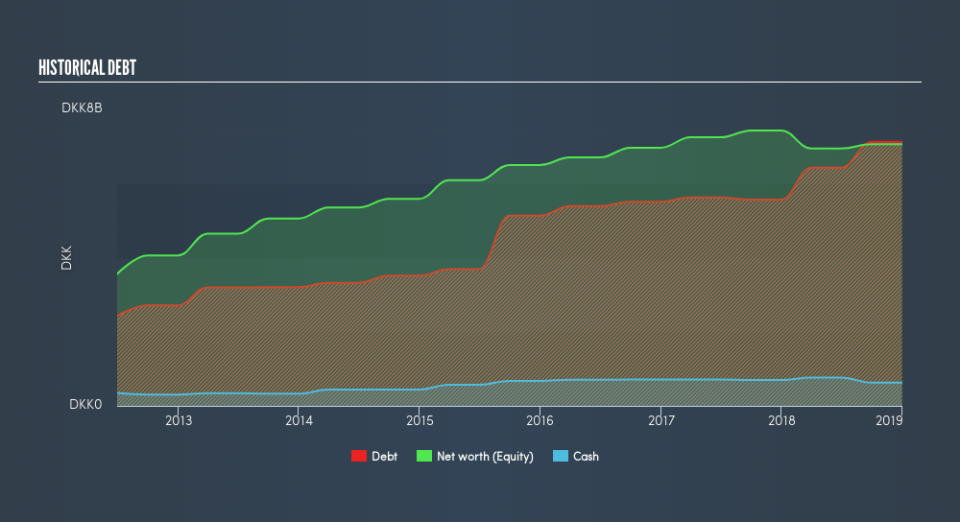What You Must Know About Demant A/S's (CPH:DEMANT) Financial Strength

Want to participate in a short research study? Help shape the future of investing tools and you could win a $250 gift card!
Stocks with market capitalization between $2B and $10B, such as Demant A/S (CPH:DEMANT) with a size of ø53b, do not attract as much attention from the investing community as do the small-caps and large-caps. Surprisingly though, when accounted for risk, mid-caps have delivered better returns compared to the two other categories of stocks. Today we will look at DEMANT’s financial liquidity and debt levels, which are strong indicators for whether the company can weather economic downturns or fund strategic acquisitions for future growth. Note that this commentary is very high-level and solely focused on financial health, so I suggest you dig deeper yourself into DEMANT here.
Check out our latest analysis for Demant
DEMANT’s Debt (And Cash Flows)
DEMANT's debt levels surged from ø5.6b to ø7.1b over the last 12 months , which accounts for long term debt. With this rise in debt, DEMANT's cash and short-term investments stands at ø630m to keep the business going. Moreover, DEMANT has generated ø1.7b in operating cash flow in the last twelve months, leading to an operating cash to total debt ratio of 24%, indicating that DEMANT’s current level of operating cash is high enough to cover debt.
Can DEMANT meet its short-term obligations with the cash in hand?
Looking at DEMANT’s ø7.5b in current liabilities, the company may not have an easy time meeting these commitments with a current assets level of ø6.0b, leading to a current ratio of 0.8x. The current ratio is the number you get when you divide current assets by current liabilities.
Does DEMANT face the risk of succumbing to its debt-load?
DEMANT is a highly-leveraged company with debt exceeding equity by over 100%. This is not uncommon for a mid-cap company given that debt tends to be lower-cost and at times, more accessible. We can test if DEMANT’s debt levels are sustainable by measuring interest payments against earnings of a company. Ideally, earnings before interest and tax (EBIT) should cover net interest by at least three times. For DEMANT, the ratio of 41.23x suggests that interest is comfortably covered, which means that debtors may be willing to loan the company more money, giving DEMANT ample headroom to grow its debt facilities.
Next Steps:
Although DEMANT’s debt level is towards the higher end of the spectrum, its cash flow coverage seems adequate to meet debt obligations which means its debt is being efficiently utilised. But, its low liquidity raises concerns over whether current asset management practices are properly implemented for the mid-cap. I admit this is a fairly basic analysis for DEMANT's financial health. Other important fundamentals need to be considered alongside. You should continue to research Demant to get a more holistic view of the stock by looking at:
Future Outlook: What are well-informed industry analysts predicting for DEMANT’s future growth? Take a look at our free research report of analyst consensus for DEMANT’s outlook.
Valuation: What is DEMANT worth today? Is the stock undervalued, even when its growth outlook is factored into its intrinsic value? The intrinsic value infographic in our free research report helps visualize whether DEMANT is currently mispriced by the market.
Other High-Performing Stocks: Are there other stocks that provide better prospects with proven track records? Explore our free list of these great stocks here.
We aim to bring you long-term focused research analysis driven by fundamental data. Note that our analysis may not factor in the latest price-sensitive company announcements or qualitative material.
If you spot an error that warrants correction, please contact the editor at editorial-team@simplywallst.com. This article by Simply Wall St is general in nature. It does not constitute a recommendation to buy or sell any stock, and does not take account of your objectives, or your financial situation. Simply Wall St has no position in the stocks mentioned. Thank you for reading.

